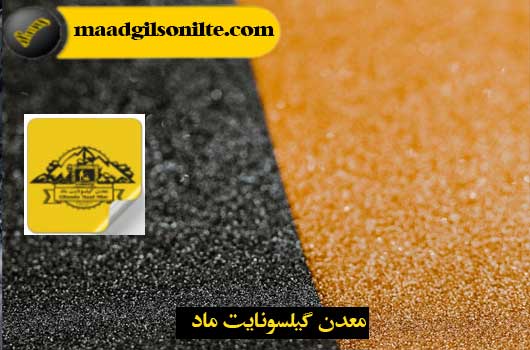
Fibers in asphalt, a widely used construction material for pavements, have their limitations regarding durability and performance in various conditions. To overcome these challenges, the incorporation of fibers in asphalt has attracted considerable attention in recent years. By reinforcing asphalt with fibers, the overall performance and lifespan of pavements can be increased to a great extent. This paper reviews the use of fiber strands in asphalt mixtures and discusses their advantages, types, effects on asphalt properties, applications, challenges, and future prospects. Understanding the role of fibers in asphalt can provide valuable insights into improving infrastructure quality and sustainability in the construction industry.
Fiber reinforcement refers to the addition of small strands of materials such as polypropylene, polyester, aramid or glass to the asphalt and natural bitumen mixture. These fibers help to increase the performance and durability of asphalt pavements.
The purpose of fiber reinforcement is to improve the mechanical properties of asphalt, making it more resistant to cracking, rutting and other forms of pressure caused by traffic loads and environmental factors. It’s like giving asphalt a superhero costume for greater strength and longevity.
The concept of fiber strand reinforcement dates back to the 1960s, when researchers began experimenting with different types of fiber strands and asphalt mixtures. Initially, it was used for crack control, but its advantages soon became apparent and the use of these fibers in asphalt became popular.
Over the years, advances in materials science and engineering practices have led to the development of a variety of fibers suitable for asphalt applications. Today, asphalt and waterproofing reinforced with fiber strands is a well-known technique that is used in road construction all over the world. It’s safe to say that fiber strands have become an integral part of the asphalt industry’s toolbox.
Adding this material and gilsonite to asphalt makes it more durable. Fiber reinforcement helps distribute internal stress in the asphalt mixture, which reduces the likelihood of cracking, rutting, and premature damage.
No one likes asphalt that cracks like a bad joke or breaks up like a worn tire track. Fortunately, fibers come to the rescue! The incorporation of fiber strands in asphalt can significantly improve its resistance to cracking and rutting caused by traffic loads and temperature changes.
Asphalt reinforced with fibers shows high resistance to cracking and deformation due to temperature. It’s like giving your asphalt a thermostat to withstand both scorching summers and freezing winters.
Polypropylene fibers are like asphalt’s reliable accessory. They are commonly used due to their excellent resistance to moisture damage and ability to control cracking. These fibers act like tiny reinforcements and hold the asphalt together to prevent cracking and spreading.
Polyester threads are the tough guys of the asphalt world. They have high tensile strength and can withstand heavy traffic loads. These fibers help to minimize rutting and increase the life of the asphalt pavement. You can think of them as protectors that protect your pavement from daily beatings.
Aramid fibers bring fancy technology to the asphalt party. These high performance filaments offer exceptional tensile strength, heat resistance and durability with the good density of natural bitumen. Aramid fibers have excellent tear resistance and can handle heavy traffic without breaking a sweat. They are like super soldiers of asphalt reinforcement.
Glass fibers are asphalt reinforcement divas. They have exceptional resistance to moisture damage and excellent bonding properties with asphalt adhesive. These fibers help prevent cracking, improve the overall strength of the mix, and make the asphalt more flexible.
Asphalt reinforcement significantly increases the tensile strength and flexibility of the mixture, making it less prone to cracking and more resistant to deformation.
Moisture can be the enemy of asphalt and cause it to deteriorate faster. But fear not, because fibers come to the rescue once again. Fiber reinforcement improves asphalt’s resistance to moisture damage, prevents potholes, and reduces the need for frequent repairs.
Fatigue resistance refers to how well asphalt can withstand repeated loading cycles without cracking. Fiber reinforcement significantly increases asphalt fatigue resistance, reduces crack propagation, and extends pavement life.
First, the type and dose of fiber must be carefully selected to achieve optimal performance. Second, the mixing process must be optimized to ensure uniform distribution of fibers throughout the asphalt and natural bitumen mixture. Construction techniques and equipment also play a role in achieving a smooth and uniform asphalt pavement with reinforced fibers.
Just like a scientist conducting experiments to prove a hypothesis, laboratory testing is critical to evaluating the performance of fiber-reinforced asphalt. Various tests, such as indirect tensile strength, fatigue and rut resistance, can provide insight into how well the fibers increase the overall durability of the asphalt. By analyzing the results, engineers can adjust the fiber dosage and design the mix to achieve optimal performance. Remember, in the FRP lab, the ingredients are carefully measured, mixed and tested to ensure the pavement can stand the test of time.
Field performance and case studies provide valuable insights into how these pavements hold up in everyday conditions. Do fiber strands increase pavement resistance against cracking and rutting? Do they make the pavement last longer? Case studies can answer these questions and showcase success stories of fiber-reinforced asphalt projects. From highways and roads to sidewalks and airport parking lots, these real-world examples demonstrate the practicality and benefits of using fiber strands in asphalt.
Engineers and decision makers must weigh the benefits of using fiber-reinforced asphalt and natural Gilsonite against the additional costs. However, it is important to consider the long-term savings that can be achieved through improved pavement durability and reduced maintenance. Finding the right balance of cost and effectiveness is key to ensuring the feasibility of fiber reinforced asphalt projects.
Some fibers may require modified asphalt binders or additives to ensure strong adhesion and proper dispersion. Compatibility issues can affect the overall performance and lifespan of fiber-reinforced asphalt, so compatibility is essential. Carefully consider fibers and adhesives before mixing them together.
Similarly, the long-term performance and maintenance requirements of fiber-reinforced asphalt must be considered. Will fiber continue to provide its strengthening benefits over time? How does the asphalt concrete pavement need to be maintained and repaired? Regular inspections, proper maintenance practices, and periodic rejuvenation may be required to maintain the performance of fiber-reinforced asphalt concrete and bitumen. By addressing these long-term considerations, we can ensure the sustainability and longevity of fiber-reinforced asphalt pavements.
As a result, the use of fibers in asphalt has revolutionized the construction industry. Providing an effective solution to increase the durability and performance of pavements. With a wide range of advantages, including improved resistance to cracking, rutting and temperature changes, fiber-reinforced asphalt offers a promising approach to achieving durable and resilient infrastructure. However, challenges such as affordability and compatibility with asphalt binders must be addressed, and ongoing research and development in fiber technology is critical for further improvements. By harnessing the potential of fiber-reinforced asphalt, we can pave the way for safer, more sustainable, and more efficient roads for the future.
The fibers that are usually used in asphalt include polypropylene, polyester, aramid and glass fibers. Each type of fiber offers specific properties and characteristics that can be tailored to meet the desired performance requirements for different asphalt applications.
Fibers in asphalt provide several benefits, including increased durability, increased resistance to cracking and rutting, improved tolerance to temperature changes, and reduced maintenance requirements. These benefits contribute to longer and more reliable pavement infrastructure.
Yes, there are certain challenges to consider when using fibers in asphalt. These include the cost-effectiveness of fiber reinforcement, ensuring compatibility with asphalt binders and additives, and understanding the long-term performance and maintenance requirements of fiber-reinforced pavements. Addressing these challenges is critical to successful implementation.

